November 19, 2015 - Spring in the Mid-Atlantic
There's nowhere I'd rather be on a beautiful spring morning than in the forests of the mid-Atlantic states. From the mixed pine and deciduous forests of the coastal plain up to the spruce forests of the high Appalachians, the area hosts 29 species of breeding warblers, along with numerous vireos, tanagers, and other songbirds, each more beautiful than the last. I knew that spring of 2015 would be my last spring living on the east coast for a while, with my move back to New Mexico scheduled for August, so I took every available opportunity to get out in the woods in April and May and make it my best season of bird photography ever.
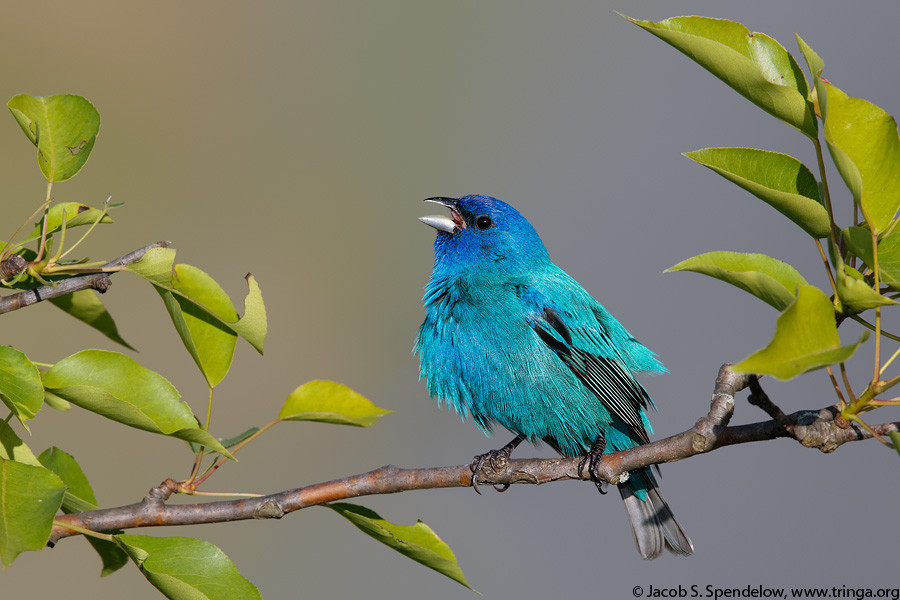
An Indigo Bunting sings his heart out on a perfect morning in May. There's no time like spring!
I started out my spring bird photography in mid-April in the mixed forests and swamps of Maryland's eastern shore. Things got off to a great start in those forests, with six species of warbler photographed in the first morning, including a gorgeous Prothonotary Warbler. I also got photos of Blue-gray Gnatcatcher, White-eyed Vireo, and, most significantly for me, Brown Thrasher. Despite being common to abundant throughout the region (and throughout much of North America), that species has never cooperated for me until this spring, and it was probably the "easiest" species that I didn't have a good photo of. I'm glad that curse is finally broken.
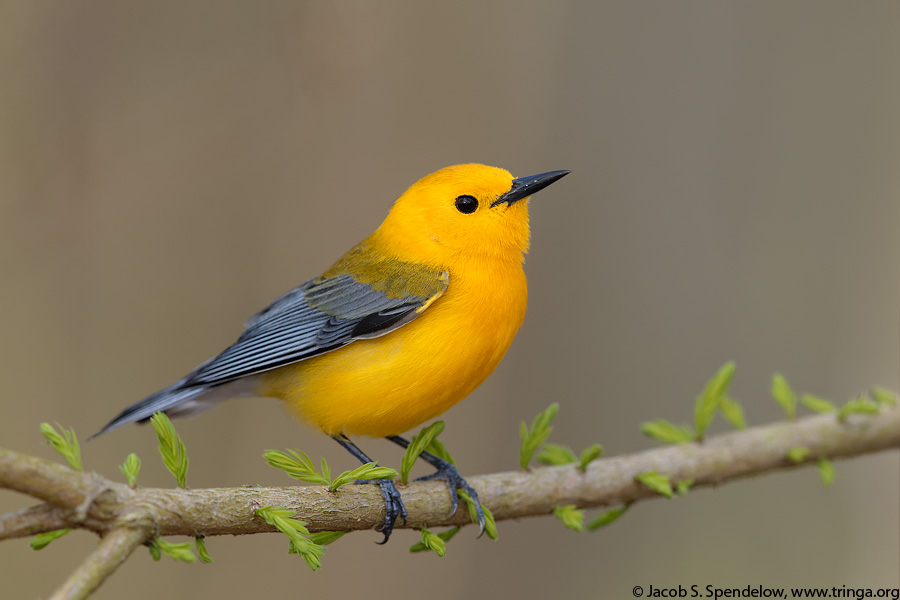
A Prothonotary Warbler on a Bald Cypress branch.
My next weekend photo trip took me out to the beautiful forests of central West Virginia. They say that West Virginia is "almost Heaven," and I fully agree, at least from a birding and nature standpoint. The forests of West Virginia will always have a special place in my heart as the site of my first successful eastern songbird photography sessions back in 2011, when I made the long drive out from DC several times to photograph the abundant warblers and other songbirds of the area. I got my first photos of many of my favorite species, like Cerulean and Yellow-throated Warblers, in those forests. In hindsight I could probably have done about as well closer to home, but I didn't know nearly as much about where to find breeding songbirds back then, and picked central West Virginia largely on the basis of the amazing Breeding Bird Survey data from that area. In more recent years I've stayed closer to home for my spring photography just to cut down on my driving, but I decided to make a few more trips out to West Virginia this spring to revisit some of my favorite places from 2011. The main target for my first trip was the incomparable Cerulean Warbler, and I wasn't disappointed. I found plenty of singing Ceruleans - West Virginia has more Cerulean Warblers than any other state - and over the course of a few days I got plenty of photos of birds singing and foraging in a variety of light conditions ranging from very soft to very sweet. Along with the Cerulean, I also got to photograph some other good birds like Northern Parula and Pileated Woodpecker.
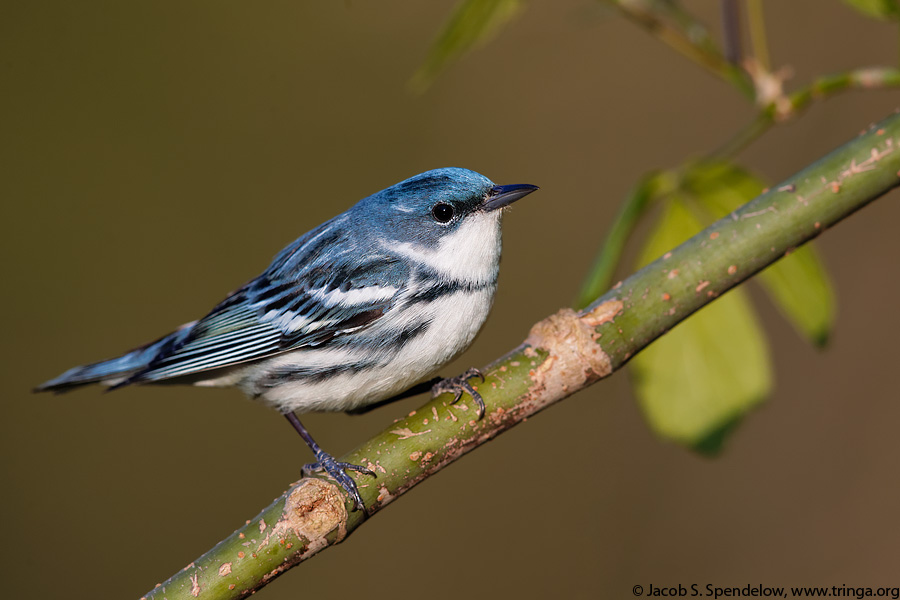
One of my favorite birds, the Cerulean Warbler. West Virginia holds more than a quarter of the total Cerulean Warbler population.
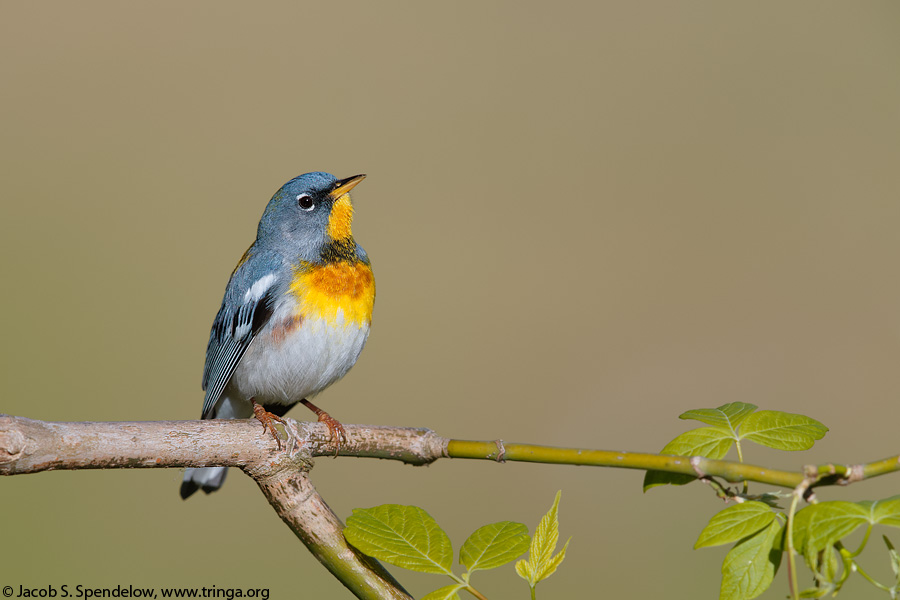
A Northern Parula on a Box Elder branch. The Northern Parula is the smallest eastern warbler.
After a glorious weekend in West Virginia in late April, I spent the first weekend in May closer to home, exploring some very productive areas along the Blue Ridge Mountains of Virginia. My main target on this trip was American Redstart. Despite being one of the more common warblers, it's one that I've never had much luck with. Even after spending several days mostly devoted to this species, I still can't say I'm satisfied, but I certainly improved on what I had before. My luck was better with some of the other local songbirds, though, including some nice photos of Canada Warbler and Veery.
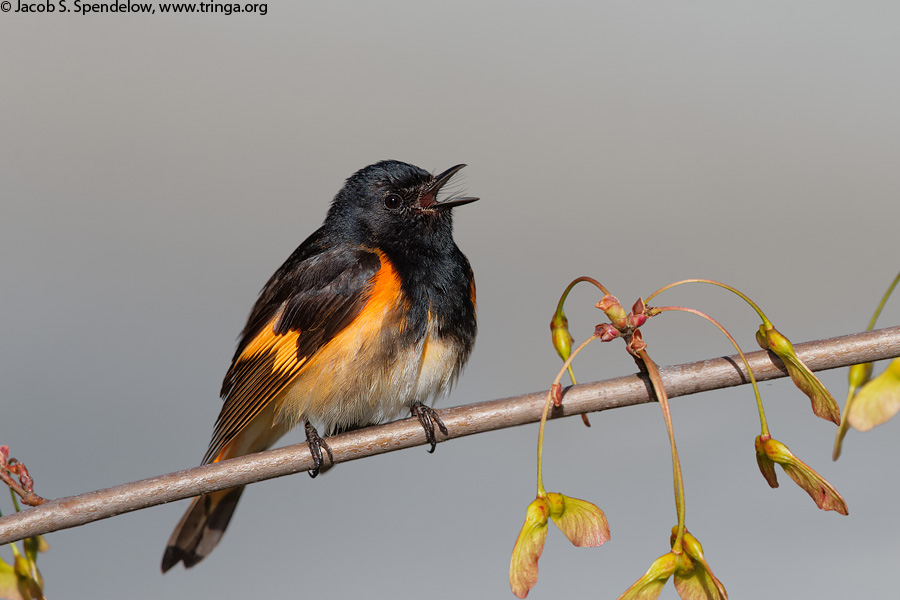
The American Redstart is the most abundant warbler in the Blue Ridge Mountains, but I've always found it to be one of the most difficult warblers to photograph. This was the only good photograph I got in several days of trying.
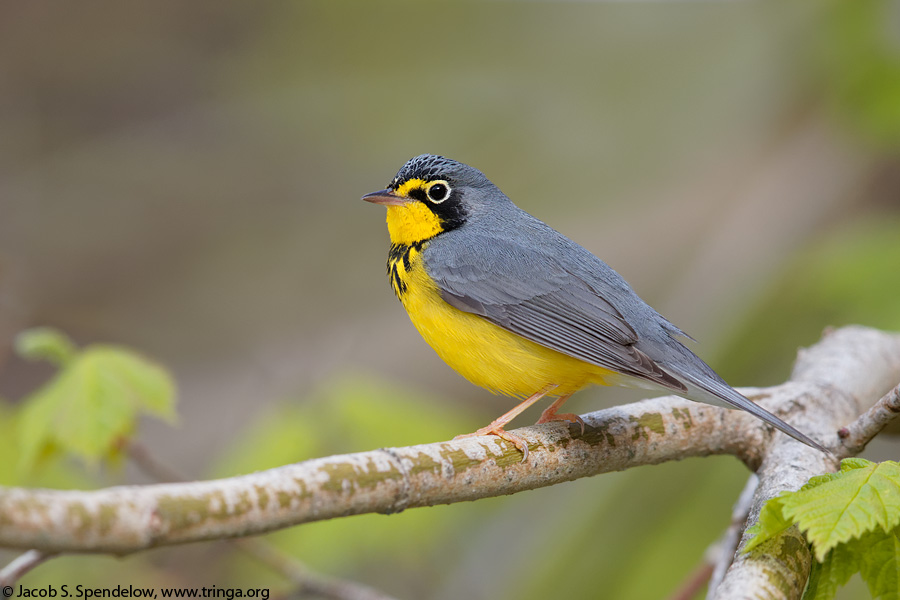
Canada Warbler is another species that has been difficult for me in the past. I was glad to finally get some images I'm happy with this spring.
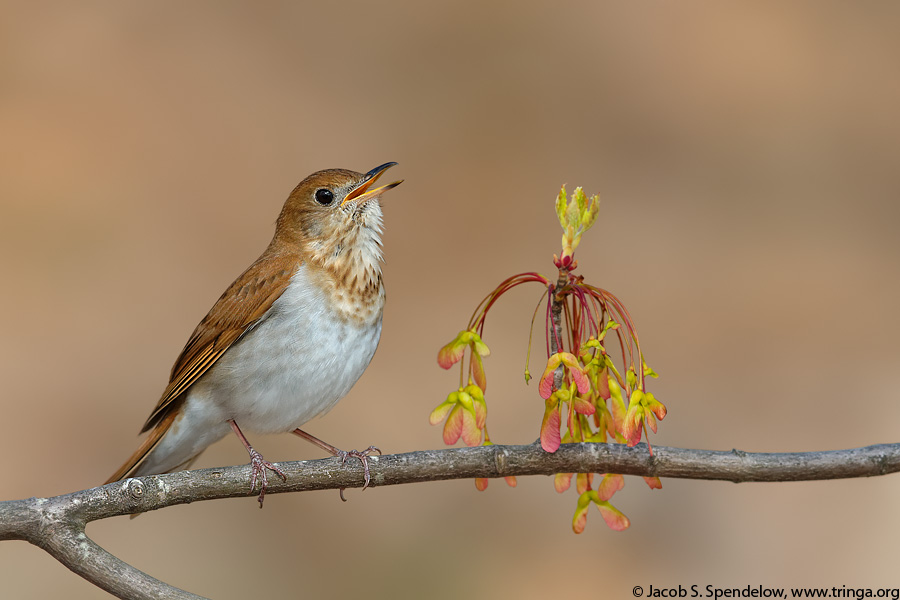
With its bright rusty colors and delicate spotting, the Veery is (in my humble opinion) the most beautiful of the Catharus thrushes.
I stayed in the greater DC area throughout the middle part of May, mostly doing short trips in the morning before work. I found some nice surprises in the process - who knew that there were breeding Blue Grosbeaks, Dickcissels, and Bobolinks just twenty minutes from my house in Arlington? - and had some great photo opportunities with species like Yellow-breasted Chat and Blue-winged Warbler. Between photographing in the early morning, working all day, and training for my next 5K race, I wasn't getting much sleep, but I was having a lot of fun!
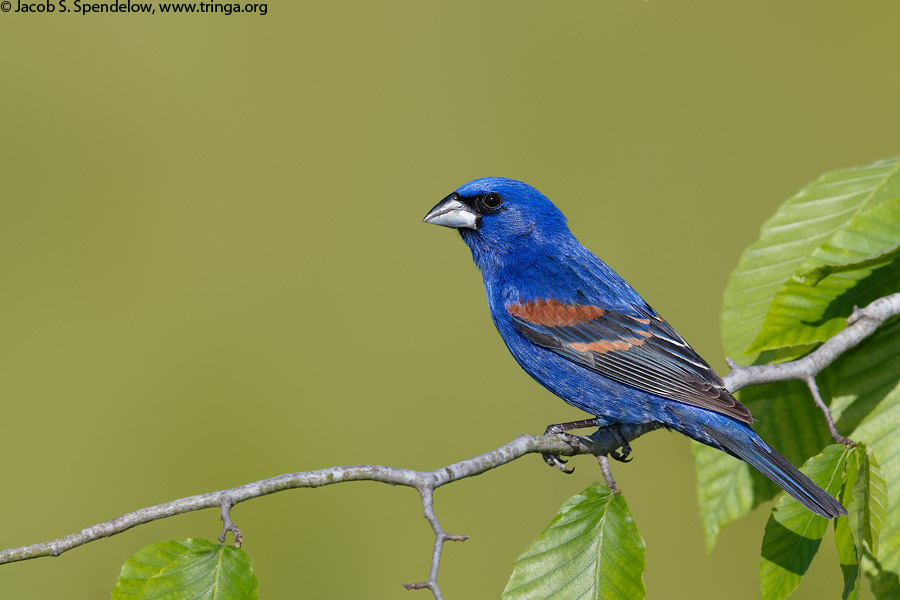
I've tried with little success to photograph Blue Grosbeak many times through the years on trips to places ranging from Arizona to Delaware, but finally got photos I was happy with on a brief trip to a park near my house in Arlington before work one morning.
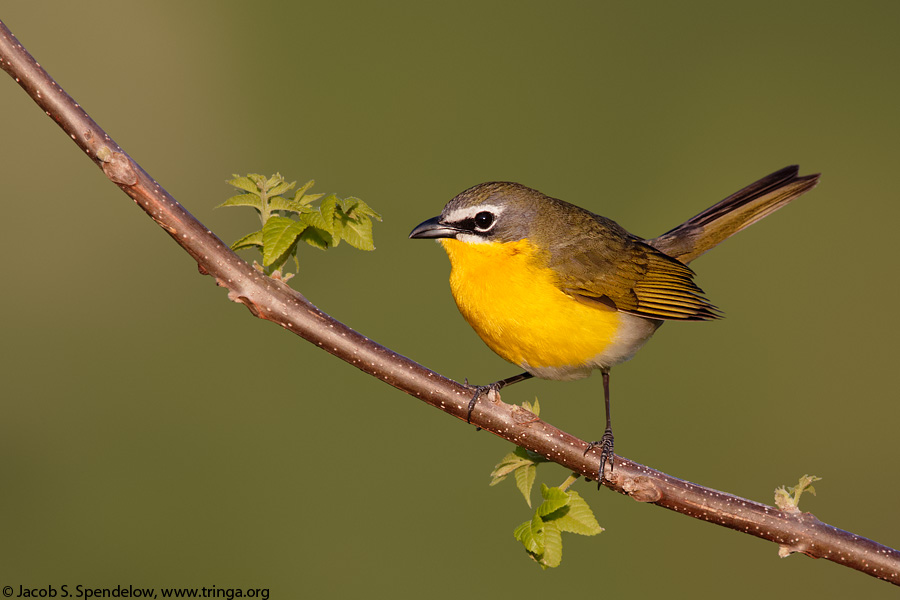
The Yellow-breasted Chat has always charmed me with its quirky song, which is a non-musical jumble of chirps and grunts, but it's been frustratingly difficult to photograph. Another one of many "problem species" that I finally got decent photos of this spring.
In late May I left the DC area again for a long Memorial Day weekend trip through West Virginia. I started out near Fayetteville with only one target in mind: Swainson's Warbler. The Swainson's isn't the most beautiful of the warblers - in fact it may be the least beautiful - but I've always had a soft spot for bland little brown birds. After getting some decent Swainson's Warbler photos, I moved on to the high Allegheny Mountains of West Virginia, which is a fantastic area for all sorts of nature photography. If I had all the time in the world I could spend weeks there just photographing landscapes and waterfalls, but being more than a little bit obsessed with birds, I spent all my time tracking down warblers and other songbirds. Highlights of that wonderful weekend included getting some good photos of Chestnut-sided and Mourning Warblers, along with some other mountain breeders like Purple Finch.
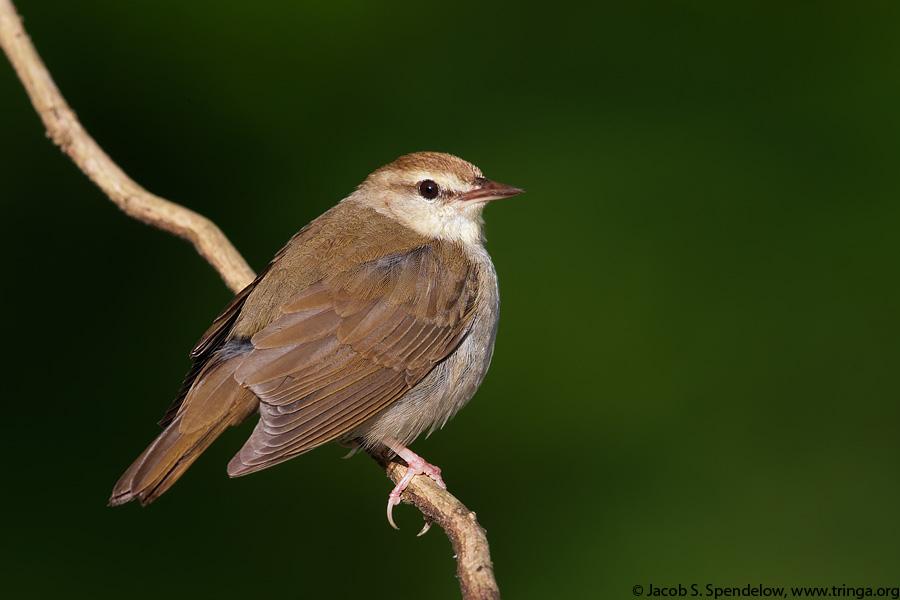
Most Swainson's Warblers are found in swamps and cane brakes, but a disjunct population in West Virginia inhabits dense rhododendron thickets.
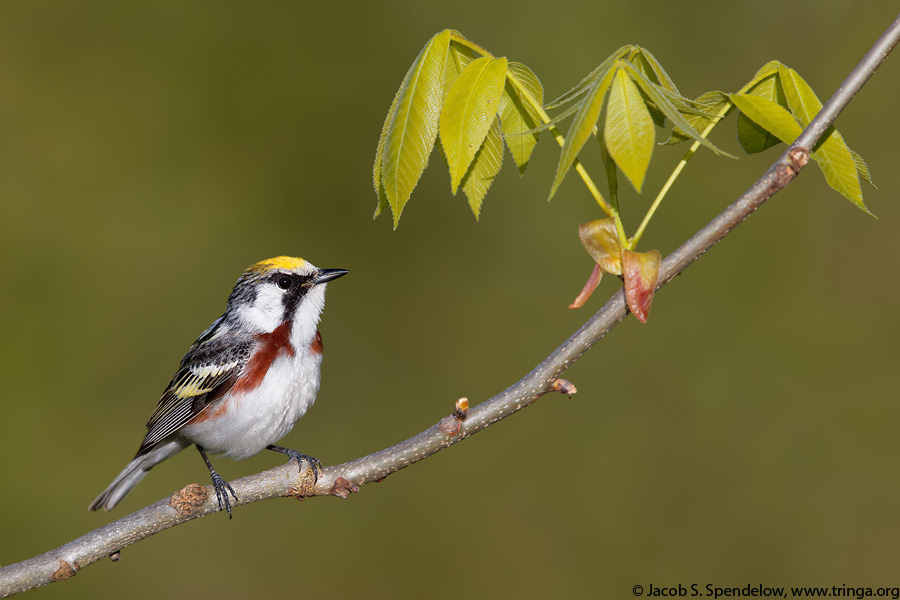
I spent a few hours searching through mountain pastureland for Black-billed Cuckoos and Golden-winged Warblers, and never found any, but getting this beautiful little Chestnut-sided Warbler was more than enough consolation.
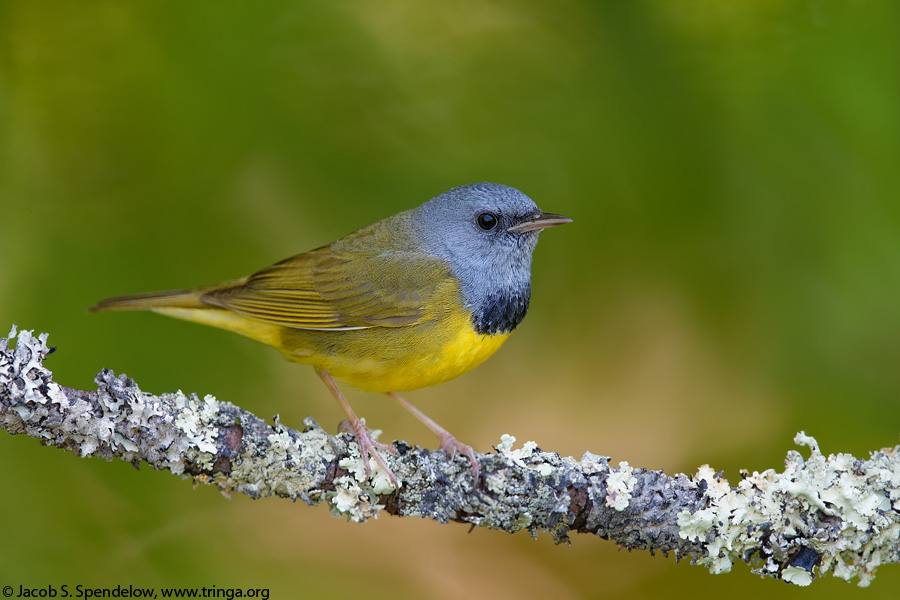
A Mourning Warbler in the Allegheny Mountains of West Virginia.
When photographing in the springtime, I usually get most of my photos within a few hours of sunrise, while bird activity is at its peak. I then spend the rest of the day either struggling to eke out a few more photos, or simply put away my camera and go scouting for the next morning's photo opportunities. During one such scouting session in the Allegheny Mountains I came across an unusual evening photo opportunity: a flower-filled meadow that was buzzing with several Ruby-throated Hummingbirds, and which was illuminated by beautiful evening sunlight right up until the sun eventually disappeared behind a distant ridge. I set up near a few flowers and was soon rewarded with several visits by a male Ruby-throated Hummingbird, who sipped nectar in front of me in the sweetest evening light.
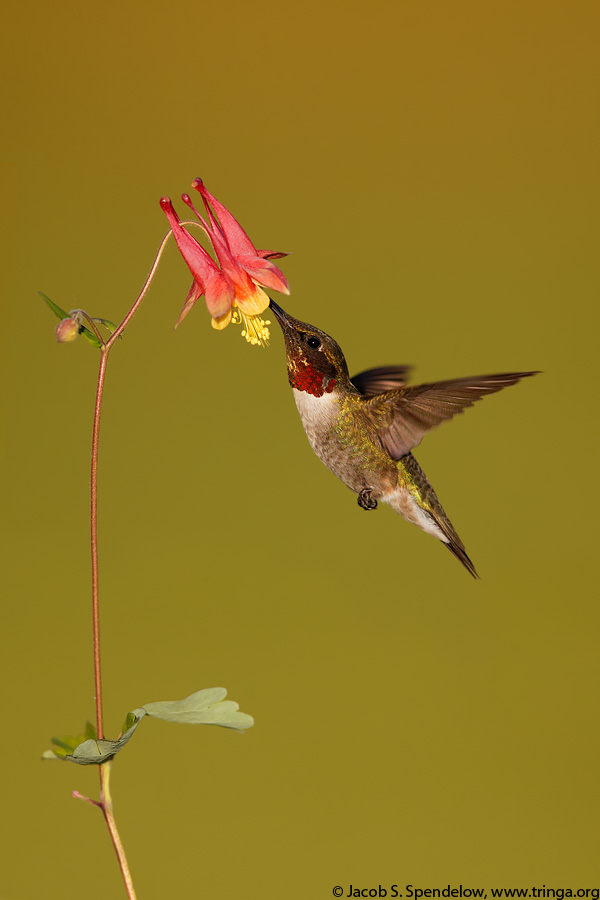
A Ruby-throated Hummingbird sips nectar in the last rays of evening sunlight.
I left West Virginia after a wonderful long weekend of photography and headed back toward home, but stopped a couple hours south of DC to try to photograph one of my biggest nemesis birds, the Chuck-will's-widow. I've spent many fruitless (and sleepless) hours wandering back roads through the pine forests of southern and central Virginia over the past few years in search of this bird, and never got so much as look at one, much less a photograph. My luck changed, though, when I finally found an approachable bird singing right next to the road. I only got two good photos before he flew, but I was ecstatic when I saw this one on the back of my camera. All those sleepless hours were more than worth it! A few minutes later a police officer pulled up to see what I was doing, since a local farmer had called in a report of a suspicious guy skulking around in the dark. I'm pretty sure the cop thought I was crazy when I excitedly showed her my Chuck-will's-widow photo, but being a crazy bird fanatic isn't illegal, so she let me go.
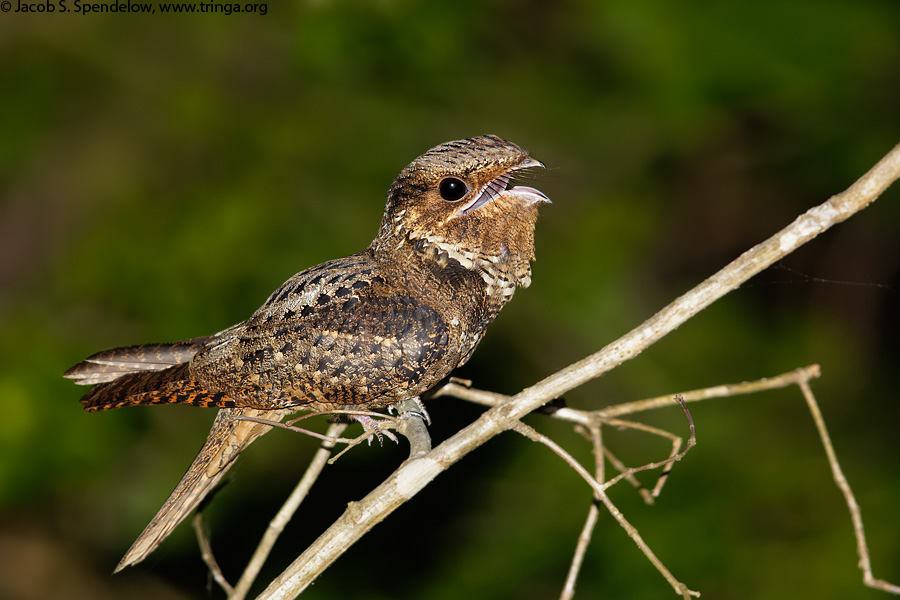
I've spent countless sleepless hours chasing Chuck-will's-widows through the forests, and never even saw one until this bird came along. I'm pretty sure this is the only cooperative Chuck-will's-widow in the state of Virginia.
After finally finding success with the Chuck-will's-widow I continued driving toward home, but stopped about half an hour away at a spot where I wanted to try to get some more Indigo Bunting photos the next morning. It was already 1 AM by the time I arrived at the bunting spot, so I knew I wasn't going to get much sleep, but when I saw a beautiful display of fireflies twinkling in the field where the bunting lived, I figured I had to try a few photos before going to bed. A few photos turned into a few hours of photography, and it soon became clear that I really wasn't going to get much sleep that night. I was further delayed when I had my second encounter with the police that night - an officer saw my car in the parking lot and came out to tell me that the park closed at sunset and I was technically trespassing. But he was almost as spellbound by the firefly display as I was, so when he saw that I was just taking photographs, he agreed to let me stay. I ended up sleeping in my car for less than an hour that night before getting up again to photograph the bunting at first light. I then went straight to work, where I was a complete zombie all day, but it was worth it after such an amazing long weekend of photography.
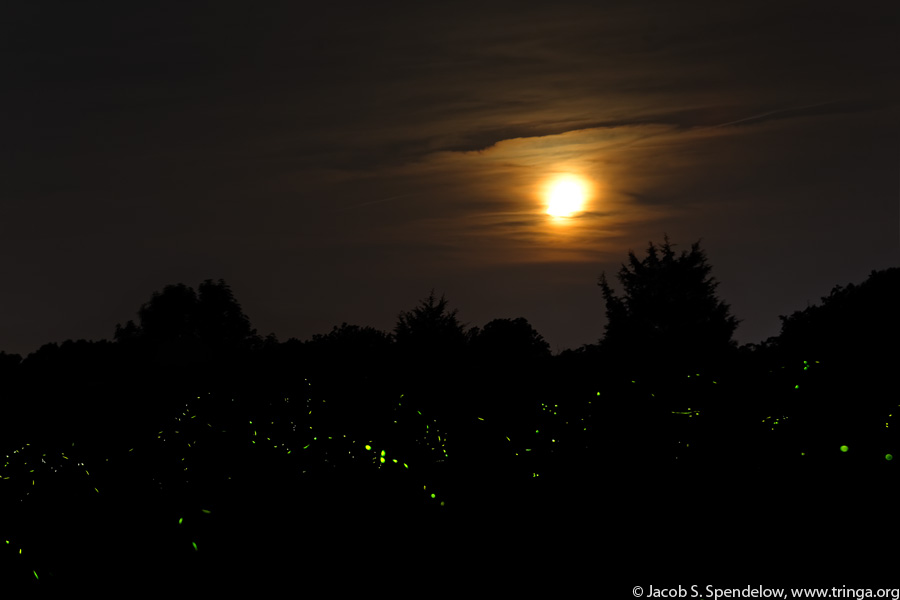
Fireflies dancing in a moonlit meadow. What a wonderful night.
I decided to spend the last weekend in May searching for the only two warblers in the mid-Atlantic that I hadn't photographed yet, Brewster's and Lawrence's Warblers. These aren't species, but distinctive hybrids of the closely-related Blue-winged and Golden-winged Warblers. After doing a lot of online research, I determined that Blue-winged and Golden-winged Warblers are both reasonably common in parts of Northern Maryland and Southern Pennsylvania, so I decided to head out to that region to look for hybrids. A few hybrids had been reported already that spring, and the first one I tried for, a Lawrence's Warbler in Northern Maryland, gave me a brief photo opportunity. I then headed on to look for another Lawrence's Warbler in southern Pennsylvania, and though I wasn't able to get any photos of that bird (which for some reason stayed high in the trees), I did get photos of a Brewster's Warbler that I found on an adjacent territory. Finding these hybrids isn't necessarily a good thing - genetic dilution of the Golden-winged Warbler by hybridization is a factor in the alarming decline of that species - but the hybrids are quite beautiful. I didn't do quite as well photographically as I had hoped with the hybrids, but did much better with a gorgeous and apparently pure Golden-winged Warbler that proved very cooperative.
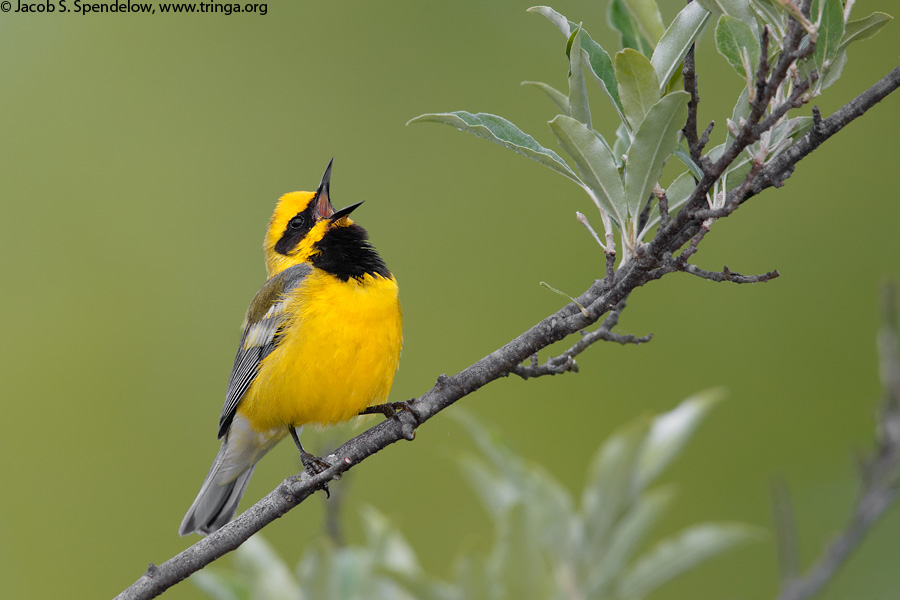
Lawrence's Warbler is one of two major forms of the Blue-winged X Golden-winged hybrid. It is the rarer hybrid form, which can occur only if both parents are themselves hybrids, since Lawrence's has two copies of each of the recessive forms of the genes that determine both body color and head pattern.
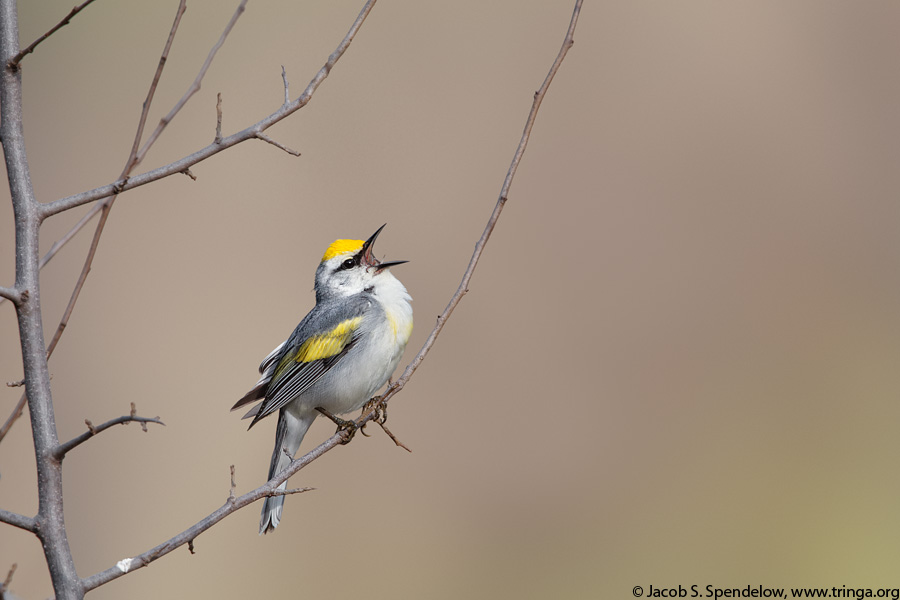
Brewster's Warbler is the most common form of the Blue-winged X Golden-winged hybrid, since it results from possession of one or more copies of the dominant forms of the genes that determine both body color and head pattern.
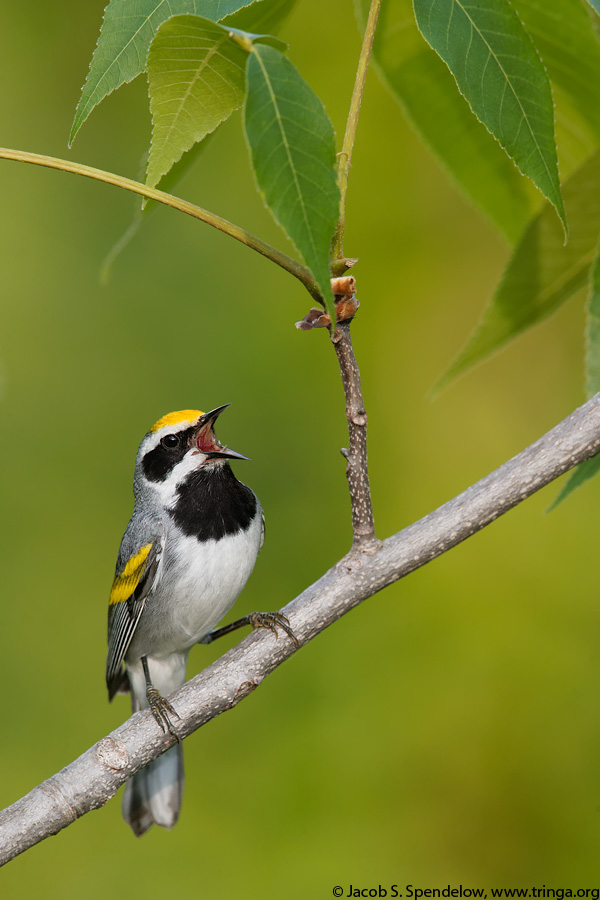
Golden-winged Warbler, a parent species of the two hybrids pictured above.
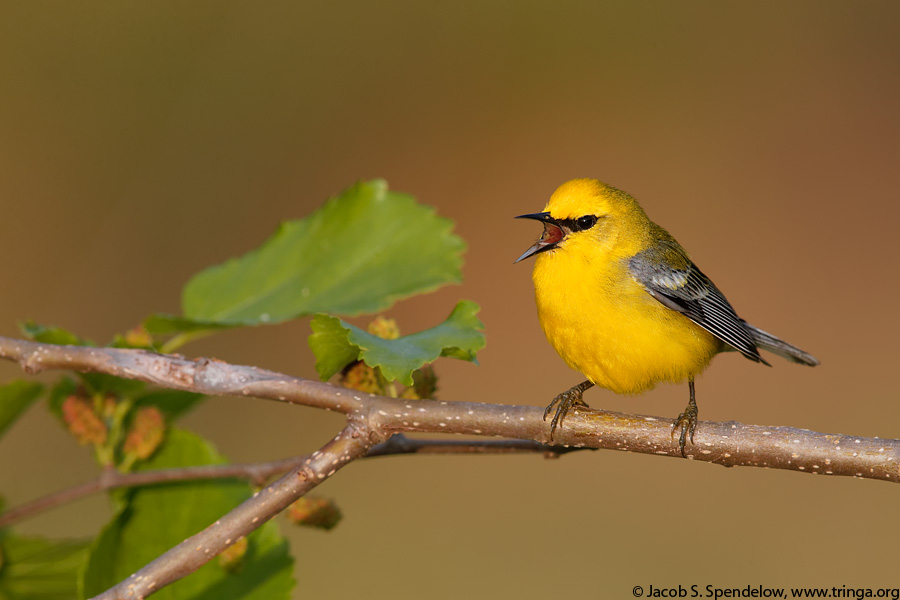
Blue-winged Warbler, the other parent species of the two hybrids pictured above.
That wraps up my photos from this spring, which was pretty much my best spring ever. I wanted to photograph as many of my beloved eastern songbirds as possible before my move to New Mexico, so I worked harder than ever this spring, and it paid off with some nice photos. It's always a bit sad leaving one place for another, and going through my spring photos the past few weeks made me feel more than a bit homesick. At the same time, I'm pretty excited to be back in New Mexico, with so many great birds and so much beautiful scenery. Despite previously living here for several years during my postdoc at Los Alamos, as well as visiting for a few months in 2013, there is still a lot of New Mexico that I haven't seen yet, and several birds that I haven't photographed yet. So expect many new photos from the southwest in the months to come.
October 16, 2015 - Costa Rica
Images from a week spent in Costa Rica back in February are now posted. This was my second time visiting Costa Rica. My first trip to Costa Rica, in January of 2014, was a magical experience, and even though it was more of a birding trip than a photo trip, it nonetheless produced plenty of good images. I've been dreaming of a return visit ever since, so this past February I went back for a dedicated photo trip. I visited several of my favorite spots from last year, but also explored some new sites.

A Golden-hooded Tanager on a mossy branch in the mid-elevation rainforest of the Caribbean slope.
Costa Rica is small in land area, but with elevations ranging from sea level to over 12,000 feet, it nonetheless offers a wide range of habitats. Elevation is the main factor determining bird distribution, with distinctly different sets of birds inhabiting the lowland forests, mid-elevation forests, and high-elevation cloud forests.
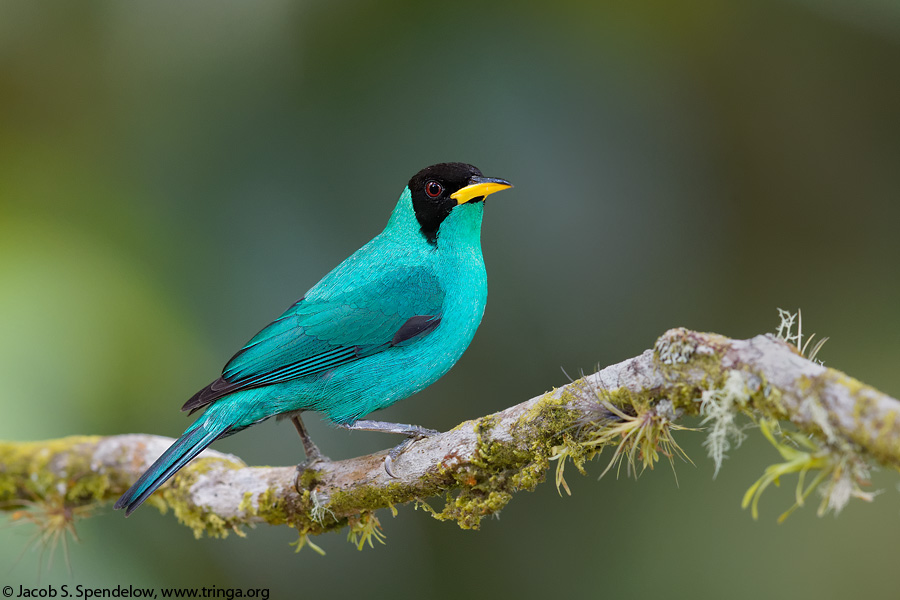
Costa Rica hosts a great variety of colorful tanagers, including the Green Honeycreeper.
I started out this trip exploring the lush mid-elevation rainforests, finding some beautiful species like Slate-colored Grosbeak and the incomparable Emerald Toucanet, both of which posed nicely for my camera. I also met a number of birders and photographers from all over the world, including a few Costa Rican photographers on a day trip from San Jose, which provided a great opportunity to talk about birds in Spanish.
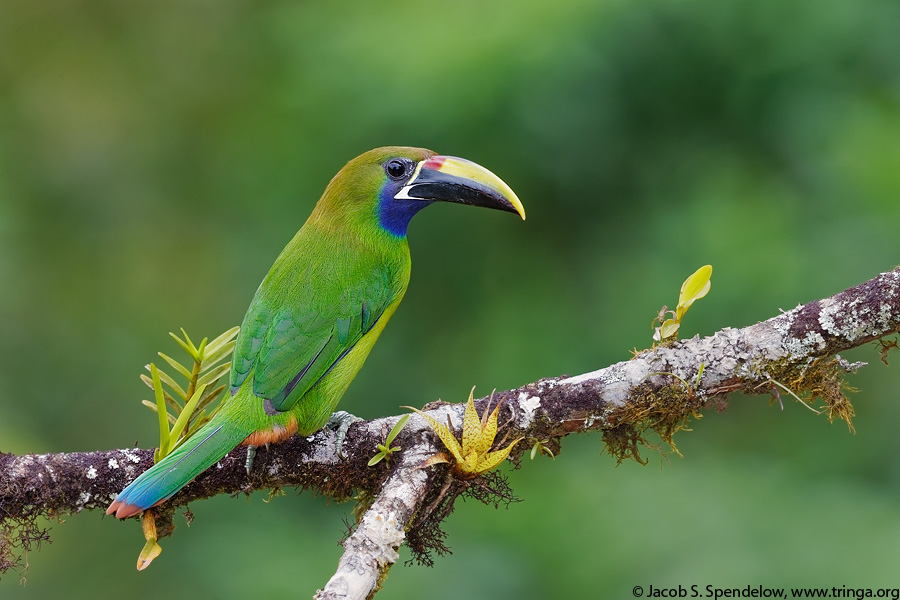
An Emerald Toucanet, one of the most beautiful birds I've ever seen.
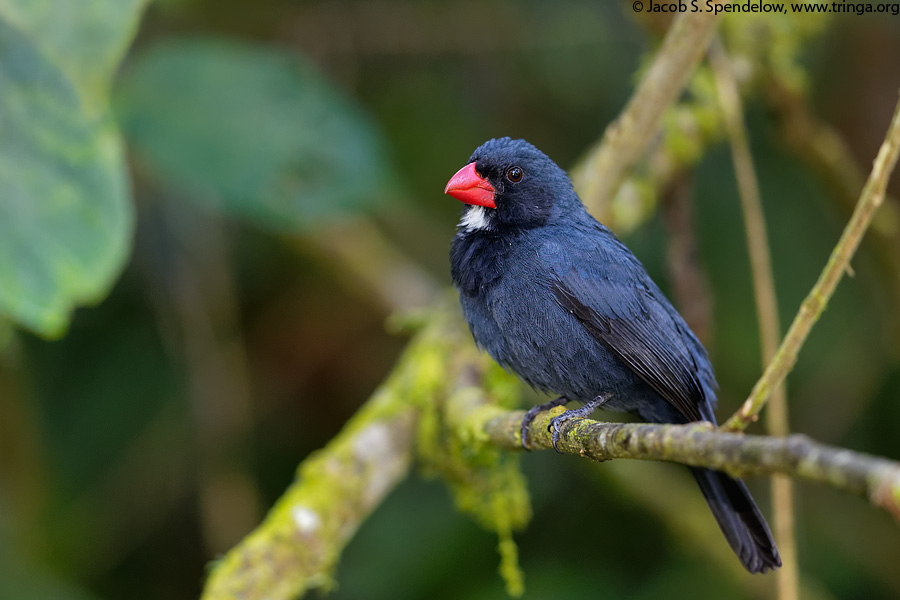
Though it looks like a cardinalid grosbeak, the Slate-colored Grosbeak is actually a saltator. This species inhabits low- to mid-elevation forests of the Caribbean slope.
After a couple days at the middle elevations, I headed further upslope to explore some locations near Poas Volcano. Hummingbirds were abundant and diverse in those areas, but the huge (for a hummingbird) and breathtaking Violet Sabrewing stole the show. Other good birds included Long-tailed Silky-flycatcher, Azure-hooded Jay, and Slate-throated Redstart.
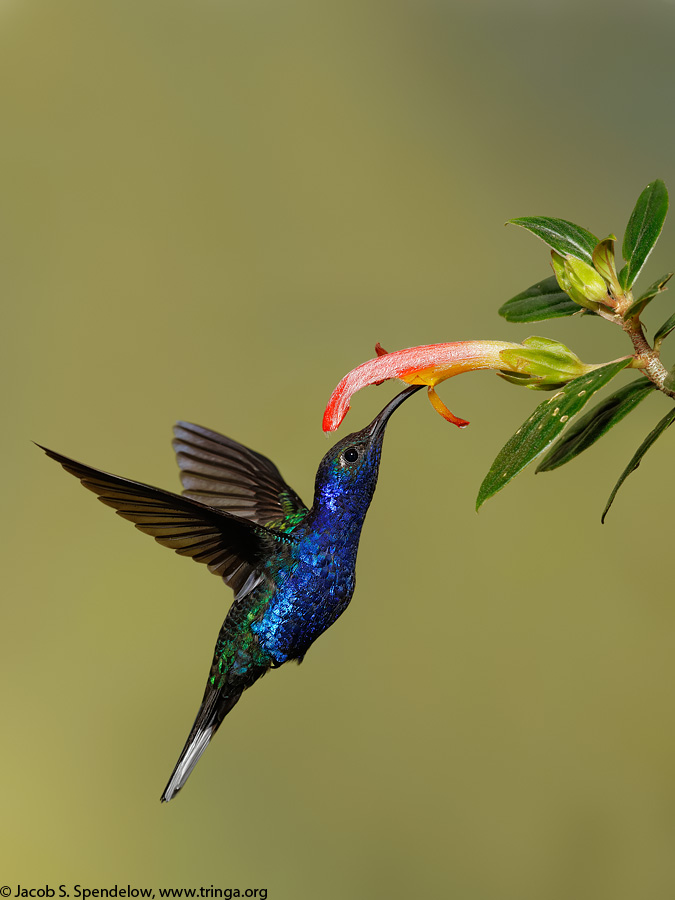
A Violet Sabrewing, the largest hummingbird species in Costa Rica.
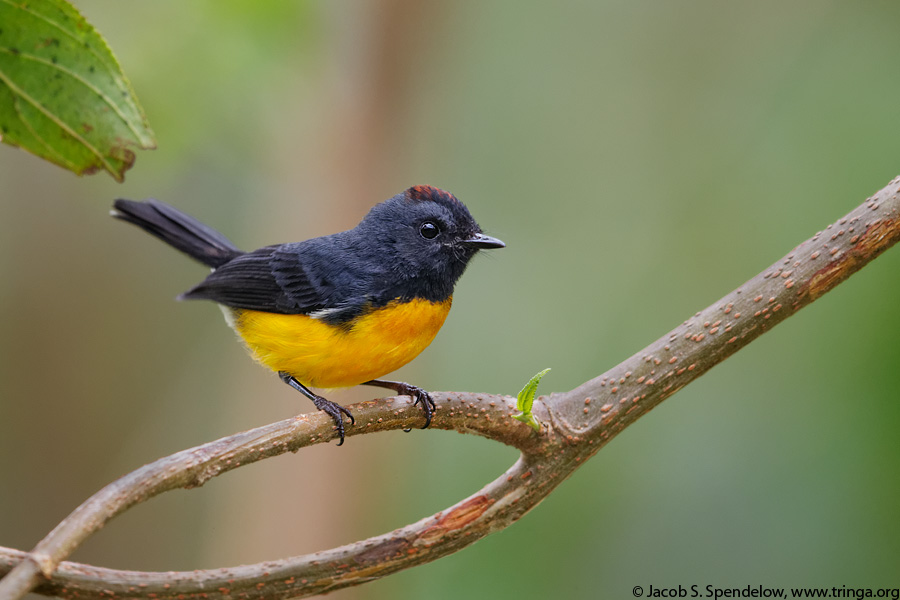
A male Slate-throated Redstart on the slopes of Poas Volcano.
The second half of my trip was spent in the lower elevation rainforests of the Caribbean slope, which are some of the most biologically diverse forests on the planet. A variety of flashy tanagers and toucans, along with some cryptic but equally charming antbirds and woodcreepers, made for fun birding, and at times excellent photography.
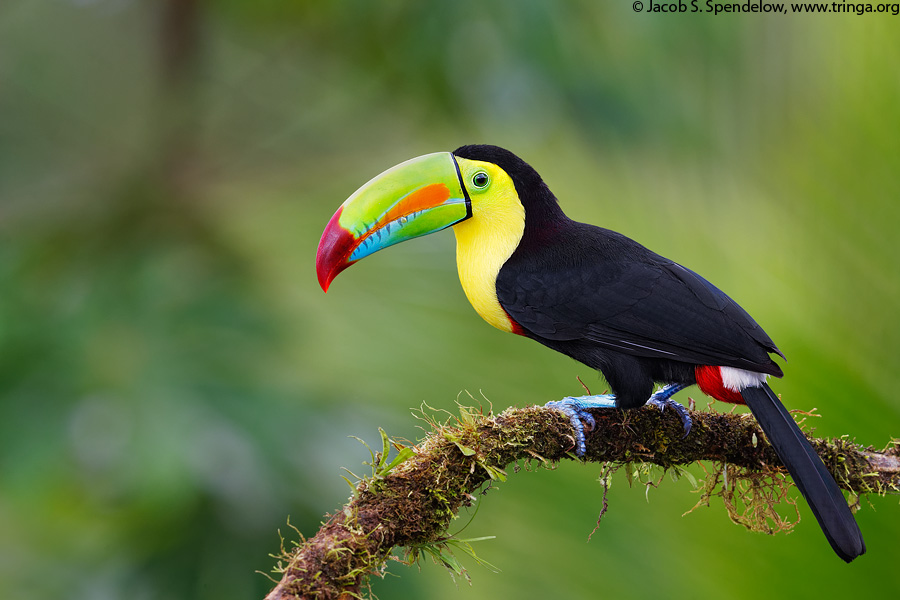
One of Costa Rica's flashiest birds, the Keel-billed Toucan inhabits lowland forests, where it forages for fruit in small flocks.
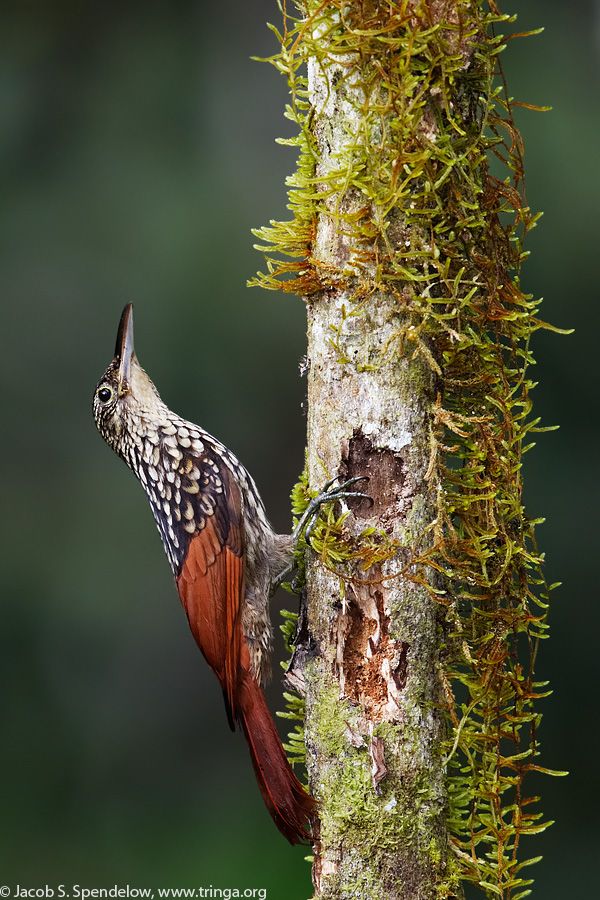
Woodcreepers, such as this Black-striped Woodcreeper, are common in Costa Rica, but difficult to photograph since they are typically found in dense forest interiors. I was lucky to spot this one working his way up a trunk at the edge of the forest.
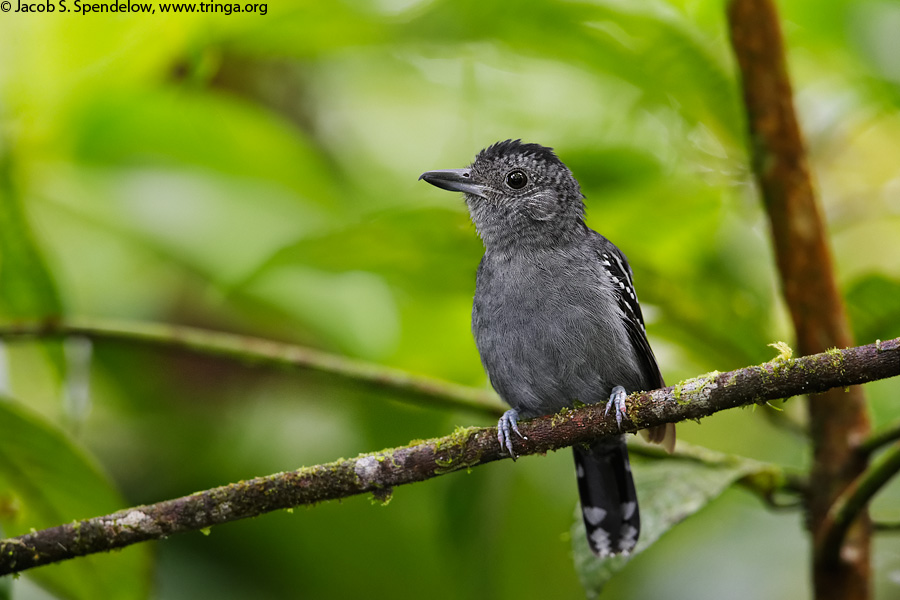
A Black-crowned Antshrike, one of about two dozen species of Antbird in Costa Rica, but the only one I've been able to photograph to date. After two trips to Costa Rica, I've still barely scratched the surface.
Now that my Costa Rica images are finally finished, I'm about to start working on my photos from last spring in the mid-Atlantic, and hope to have them posted here soon.
October 2, 2015 - Return to New Mexico
After six years on the east coast, I'm back in the mountains of New Mexico again, living in Santa Fe this time. I haven't had much time to get out with the camera yet, but a tip from a friend about a roosting Flammulated Owl prompted me to dig out my camera and head up to Los Alamos last weekend. The owl had become disoriented and flown in through an open window in a house the night before, and apparently couldn't find its way back out. The lady who lived there found it in the morning, caught it, and released it just outside. The little owl promptly flew to the nearest tree, landed on a low branch, and roosted there for the rest of the day. I arrived in late afternoon and stayed with the owl until dark. The owl slept with its eyes shut tight until long after sunset, but when it was getting dark to the point where I almost couldn't see it, it finally opened its eyes and, after a few minutes of squinting and stretching, flew off.
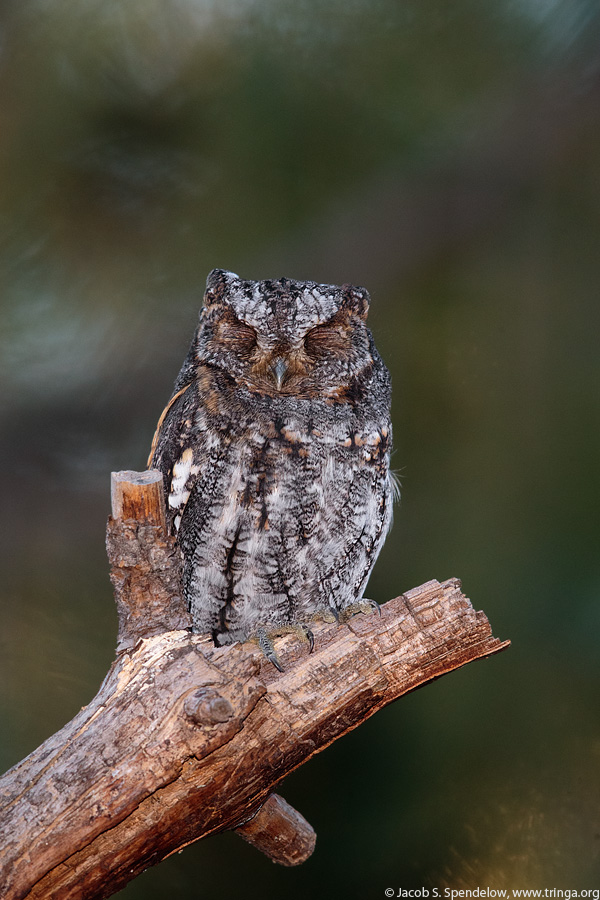
A Flammulated Owl sleeping on a ponderosa pine tree, waiting for nightfall.
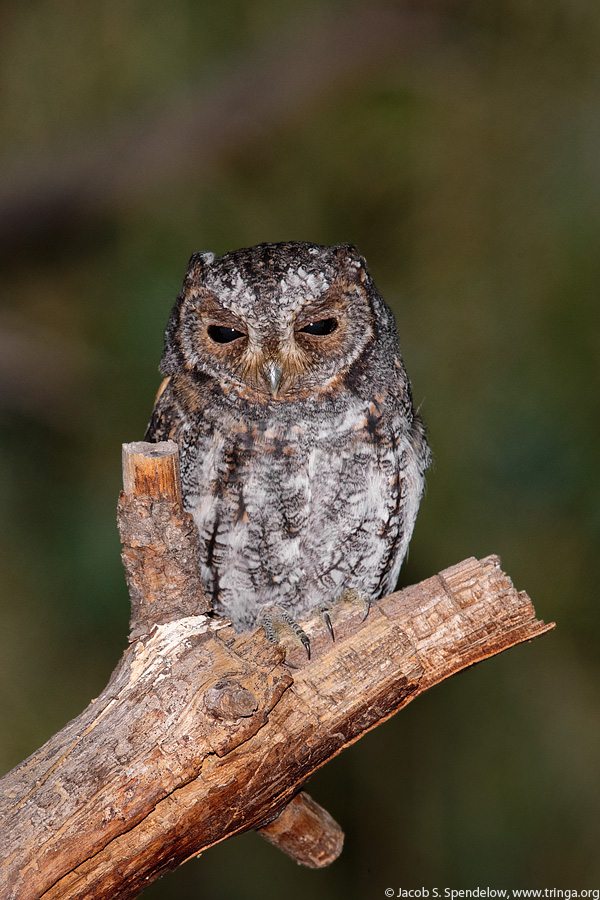
With the day's light almost completely faded, the owl's eyes finally open.
It's been a busy year with lots of travel and photography, and I've fallen pretty far behind on image processing. Usually I catch up and get my images posted during the summer and fall, but with more images than ever to process and with all the time taken up by moving this summer, I'm still working on my winter images and haven't even started on spring or summer ones yet. I hope to get another update posted here before long, though.